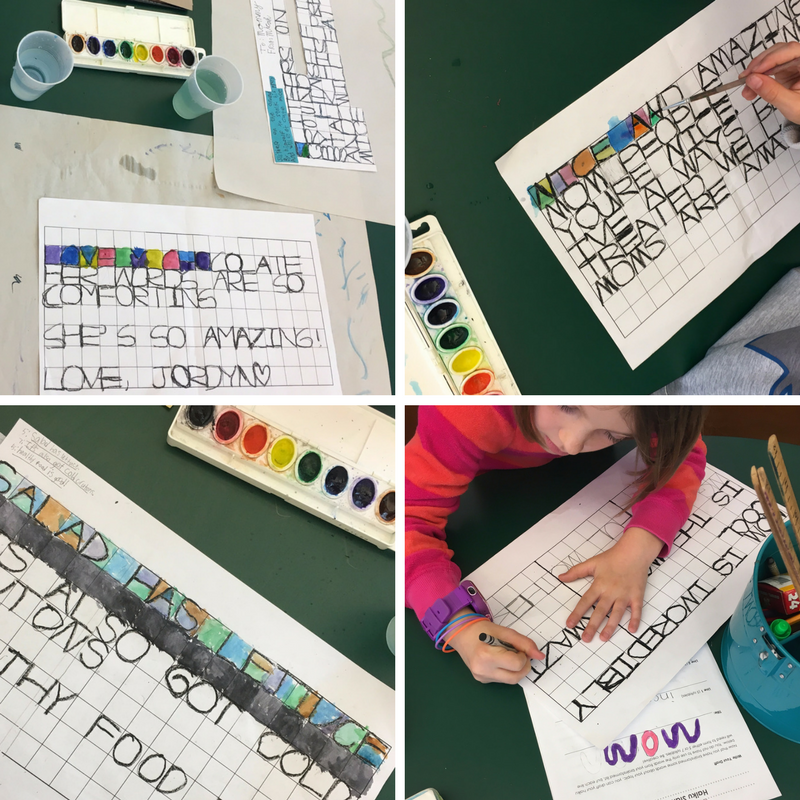Arts Integration Inspired by Paul Klee’s Once Emerged from the Gray of Night, 1918
4 Min Read • Arts Integration
If your students are anything like mine, they love a good “search and find”. Books like “I Spy” and “Where’s Waldo” fly off of my shelves, and they devour word searches when I provide them. I thought I would capitalize on this engagement by having students create their own through fine art.
Once Emerged from the Gray of Night by Paul Klee is a perfect mentor painting for this type of activity. Paul Klee was a Swedish artist who combined poetry and art. In his work below, you can see that the poem is above the art, and it is also “hidden” throughout the art itself. My students love looking at this piece in an attempt to decipher the poetry.
This “search and find” idea is so versatile when paired with this piece of Klee’s work. After creating a grid, students can work with a content theme and hide vocabulary words. They can hide a phrase that they are trying to remember or hide a multiplication fact (or times table) that they are struggling to memorize.
Steps for the Project
Once you determine what type of content you would like students to “hide”, have them come up with a theme for their work. To do this, have students look back at Klee’s Once Emerged From the Gray of Night to see how he used color. Sometimes, the letters are disguised due to the color choice, and sometimes they contrast the painted color. The color matches the text Klee wrote.
Trying to follow this example is a good challenge for students choosing to hide text. It leads to conversations and lessons on warm & cools colors as well as using color to support the theme or mood of a piece of text, music, or dance.
My class then examined how Klee drew his letters. Students experimented with writing letters or numbers to fill 1-inch boxes on a piece of grid paper. Writing large, wide numbers was much more difficult than it seemed and required my speedy students to slow down quite a bit to be successful. This was a great discussion point for our class, as sometimes we have trouble with mathematical precision.
If we aren’t precise with this project, it does not look as visually appealing. With math, when we aren’t precise we end up with the wrong answer. After this project, I found that students more frequently pointed out each others’ lack of precision, and commented how answers were inaccurate due to sloppy work or rushing.
The first time I tried this with my 3rd graders, we did some research on Paul Klee and then tessellated a tricky multiplication fact. We modeled our project after the description One Happy Art Teacher’s blog. Students drew with pencil, colored with crayons, and traced their numbers with a permanent black marker so that they facts stood out.
Effective Arts Integration
To make this project effective Arts Integration, it was important for me to choose a content topic that is challenging for students. Fact fluency is always a struggle for some students, and even our brightest students usually have one fact that eludes their memory.
For this reason, I chose to pair my math fluency standards (CC.2.2.3.A.3 and CC.2.2.4.A.1) with the visual arts creating standard, “Generate and conceptualize artistic ideas and work.” (VA:Cr1.2). In addition to (or instead of) the skills I integrated, there are many others that you could choose, such as tinting and shading, repetition, patterns, measuring to create grid paper and tessellations.
This year, I integrated Klee’s work into my Language Arts class, and it was equally challenging. Instead of tessellating multiplication facts, students wrote a haiku poem on their grid paper. This allowed us to work on counting syllables in combination with imagery and word variety.
In isolation, these skills are not extremely difficult for my students, but when they are tasked with creating an image with words, without repetition, that perfectly matched the 5-7-5 syllable count of a haiku, they struggled in a good way! Instead of using crayons and sharpies, we created a resist by tracing the poems with a black crayon and painting with watercolors in an attempt to emulate Klee’s style. Using words allowed us to connect the color choices to the words we were painting.
More resources for using Once Emerged from the Gray of Night, 1918:
Video clip to introduce the painting and Paul Klee. Best for grades 4 and above.
A kid-friendly biography about Paul Klee.
Other ideas for using Once Emerged From the Gray of Night:
Practical Pages – Paul Klee Art Appreciation (and ideas)






